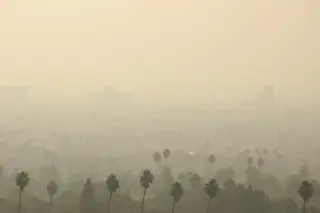Smoke and fog: Put them together and you get smog. It’s a short word for a long-standing problem, one that humanity has inflicted on itself for hundreds of years.
Simply put, smog is the generic term for certain types of air pollution, particularly very visible, thick air pollution associated with large cities and industrial zones.
Credit for the word usually goes to a doctor in Britain, Henry Des Voeux, who in 1905 used “smog” in a widely disseminated scientific paper, aptly titled “Fog and Smoke.” (However, some evidence suggests the term appeared as early as the 1880s.) It couldn’t have been a difficult word to come up with, especially for anyone familiar with the air quality of Britain’s major cities in the 19th and early 20th centuries.
Back then, coal-fueled fires burned in most homes and nearly all factories, of which there were many — never forget that Britain was ...















